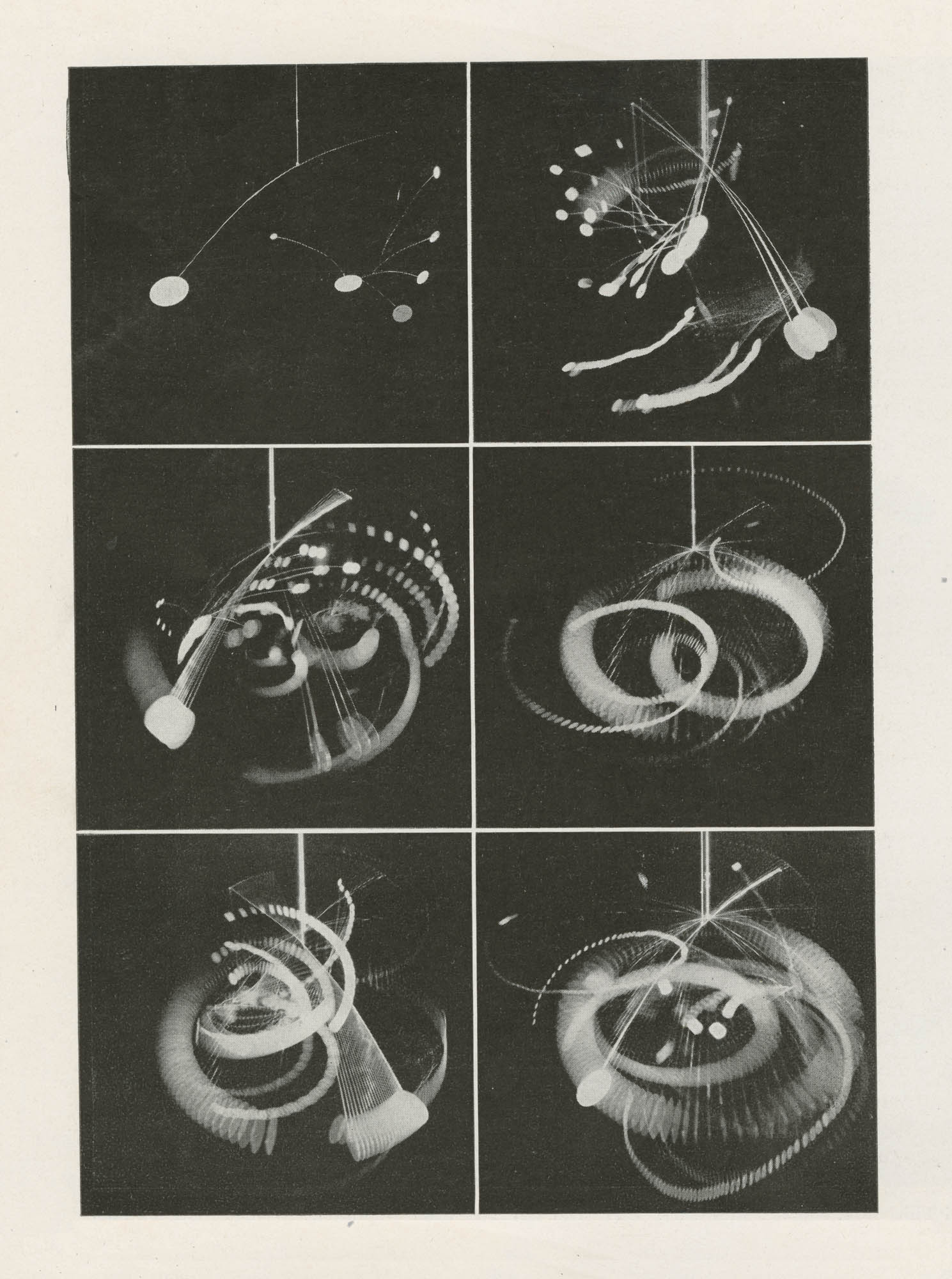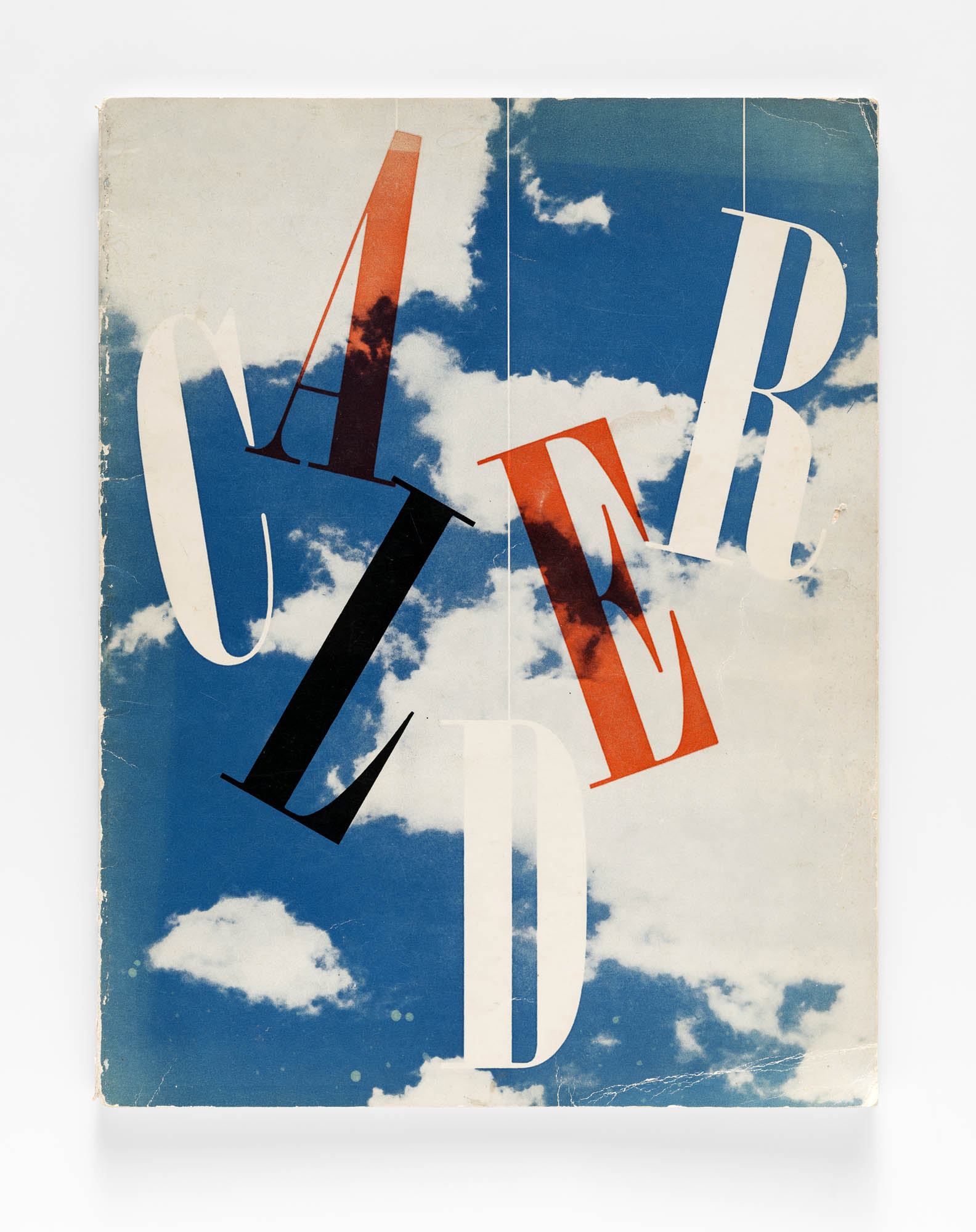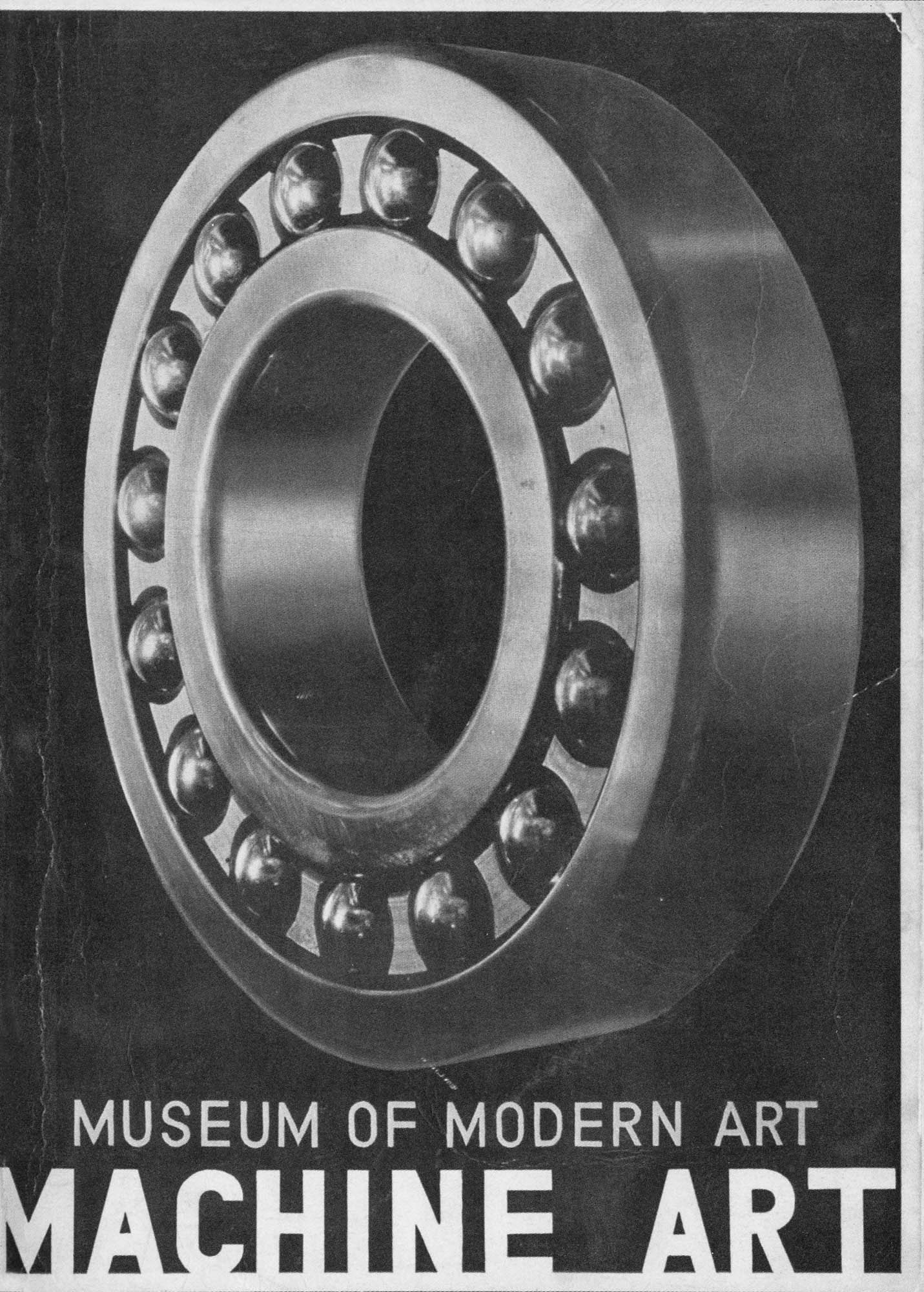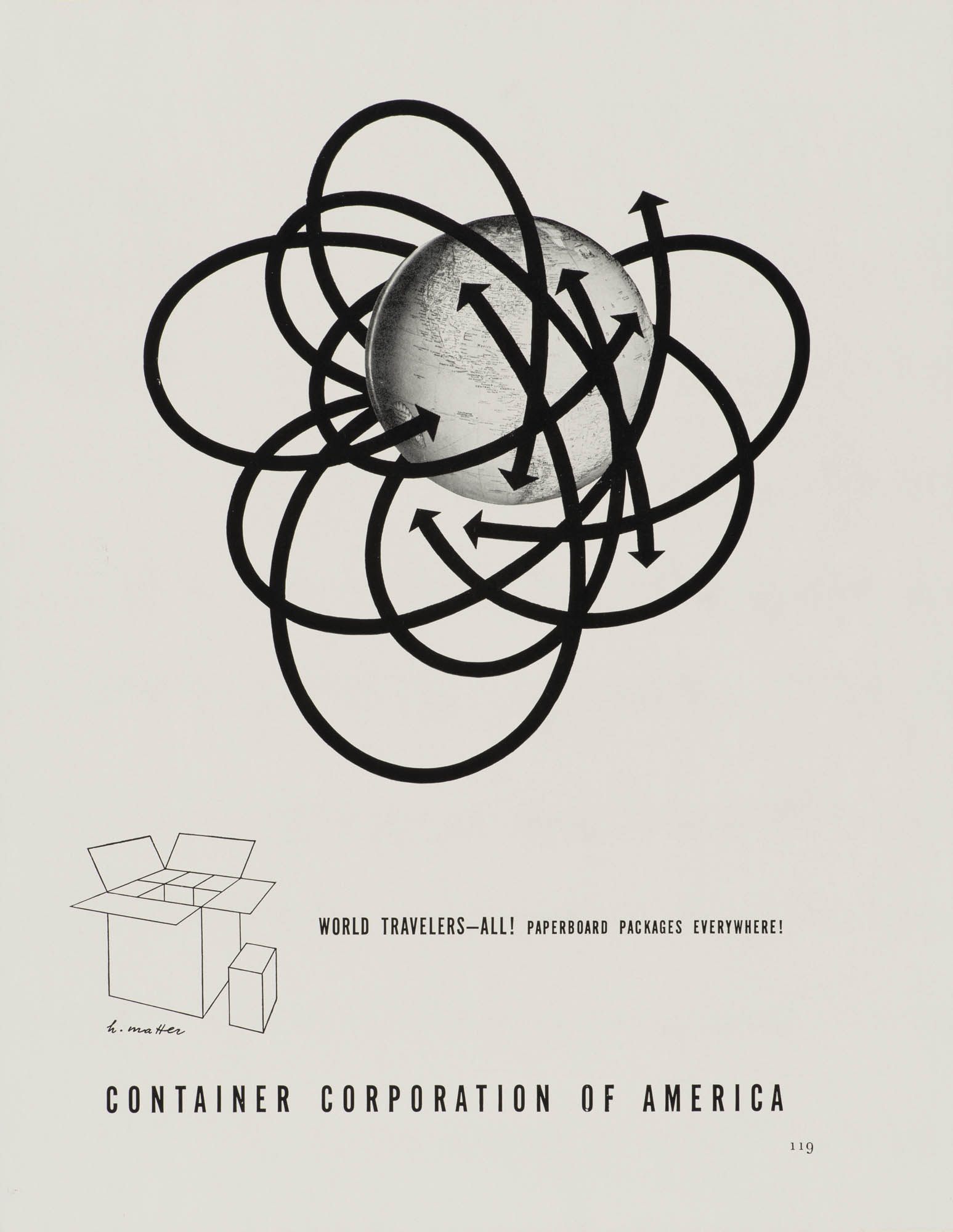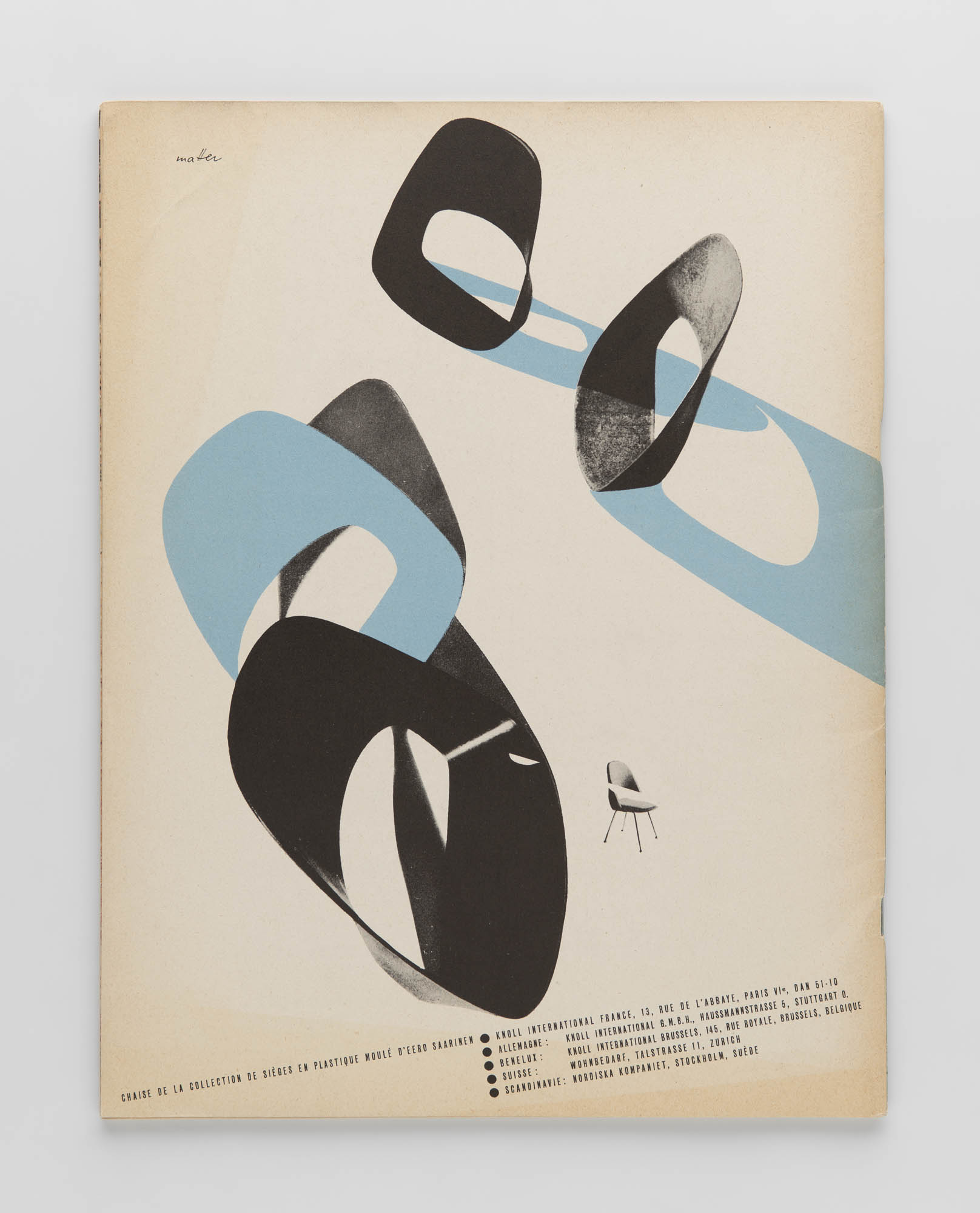8031 Zurich
8031 Zurich
8008 Zürich
Dancing letters, chairs floating in the air, clouds drifting by: Herbert Matter’s (1907–1984) American oeuvre is marked by the lighthearted, playful use of elements from modern image design. A striking number of his works created in the United States—over a period spanning five decades—revolve around the theme of movement.
When Herbert Matter left Switzerland for the United States in late 1935, the young photographer and graphic artist already had an impressive portfolio. Its contents ranged from promotional materials for the wintertime health resort of Engelberg to a series of photo posters advertising Switzerland as an international tourist destination. Matter’s designs caught the viewer’s eye with their adventurous pictorial montages. Skiing, and the wavy tracks it leaves in the snow, was a recurring motif in his work. Matter was fascinated by movement—especially when it was captured by the camera and conceived as an aesthetic experiment in the style of László Moholy-Nagy. His fascination continued in the United States, where he found ideal objects for study in Alexander Calder’s mobiles. The photographer made use of a strobe flash to capture the phases of rapid movement. In the fall of 1943, Matter presented some of these photographs in the exhibition Action Photography at the Museum of Modern Art (MoMA) in New York. His cover photograph for the October 1943 issue of the prestigious Fortune magazine appeared at the same time. The theme of the issue was the American postwar economy, so Matter pictured a ball bearing. However, he did not depict the tangible object as such. In contrast to Josef Albers’s 1934 book cover for Machine Art, also created for MoMA, Matter used rotation, superimposition, and geometric spots of color to turn the mechanical object into a sparkling piece of jewelry. The object traces spherical orbits, like the planets, simultaneously integrating the title letter O into its universe. (Karin Gimmi)
Gestaltung: Herbert Matter
Herausgabe: Time Inc., New York, US
33 × 26.5 cm
Donation: Lawrence Wolfson
Eigentum: Museum für Gestaltung Zürich / ZHdK
Alexander S.C. Rower (Hg.), Calder by Matter, Paris 2013.
Herbert Matter. A Retrospective, Ausst.-Kat. A+A Gallery, School of Art, Yale University, 16. Januar–3. Februar 1978.
Schweizerische Stiftung für Fotografie (Hg.), Herbert Matter. Foto-Grafiker. Sehformen der Zeit. Das Werk der zwanziger und dreissiger Jahre, Ausst.-Kat. Kunsthaus Zürich, 6. Oktober–3. Dezember 1995, Baden 1995.
Kerry William Purcell, «Herbert Matter», in: Museum für Gestaltung Zürich (Hg.), 100 Jahre Schweizer Grafik, Zürich 2014, S. 104–109.
Herbert Matter, plus 2, Februar 1939, Architectural Forum.
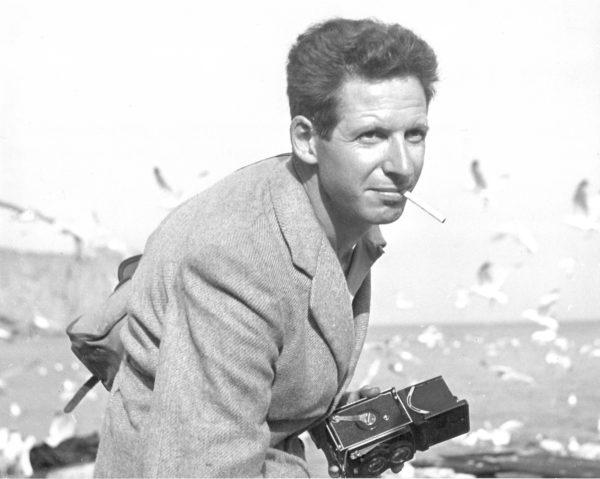
†1984 in Springs
Der Fotograf und Grafikdesigner Herbert Matter gilt als Begründer des modernen Fotoplakats in der Schweiz. Bereits Anfang der 1930er-Jahre integrierte er das Medium Fotografie überzeugend in die bis dahin rein zeichnerische Reklamegrafik. Herbert Matter studierte zunächst Malerei an der Ecole des Beaux-Arts in Genf, anschliessend besuchte er in Paris die Académie de lʼArt Moderne, wo Fernand Léger und Amédée Ozenfant zu seinen Lehrern gehörten. Von 1929 bis 1932 arbeitete Matter in Paris als selbstständiger Grafiker und Fotograf und war für das Grafik- und Fotostudio Deberny & Peignot tätig, wo er sich eine fototechnische Ausbildung erwarb. In Paris lernte er auch Adolphe M. Cassandre kennen, mit dem er mehrere Plakate gestaltete. 1932 kehrte Matter in die Schweiz zurück und sorgte mit seinen aufsehenerregenden grafischen Arbeiten für das Schweizer Verkehrsamt für eine gänzlich neue Ästhetik in der Tourismusbranche. Nach seiner Emigration in die USA 1936 arbeitete Matter in New York als Modefotograf für die Zeitschriften Vogue und Harper’s Bazaar. 1939 gestaltete er das Innere des Schweizer Pavillons auf der New Yorker Weltausstellung: Eine monumentale dreidimensionale Fotomontage vermittelte das Bild einer dynamischen Schweiz. 1946 begann die zwanzigjährige Zusammenarbeit mit dem Möbelkonzern Knoll International, für den Matter das Logo mit dem grossen K gestaltete, zudem zahlreiche Kataloge und Werbeanzeigen. Matter entwarf für Unternehmen wie New Haven Railroad und Institutionen wie das Guggenheim Museum ganze Corporate-Identity-Programme. Daneben dokumentierte er als Fotograf auch das Werk von zahlreichen Künstlern, darunter Alexander Calder, Mark Rothko und Jackson Pollock. 1960 besuchte er Alberto Giacometti in dessen Atelier in Paris, in den darauffolgenden Jahren entstanden zahlreiche Fotografien zum Leben und Werk des Künstlers, die Matter später in einem Buch veröffentlichte. Auch im Filmmetier war Matter erfolgreich, so schuf er beispielsweise 1949 den Film Works of Calder. Matter unterrichtete zudem über zwanzig Jahre lang Fotografie und Grafik an der Yale University in New Haven und prägte damit eine ganze Generation von Studenten. (Andrea Eschbach)
Schweizerische Stiftung für die Photographie (Hg.), Herbert Matter. Foto-Grafiker, Sehformen der Zeit, Baden 1995.
Porträt Herbert Matter
Abbildung: artnet.com / Fotografie: Alex Matter
Zeitschrift, Umschlag, Fortune 4, 1943, Gestaltung: Herbert Matter, Donation: Lawrence Wolfson
Abbildung: Museum für Gestaltung Zürich / ZHdK
Fotografie, Hanging Mobile, 1936, Künstler: Alexander Calder
Abbildung: James Johnson Sweeney, Alexander Calder. The Museum of Modern Art, New York 1951, S. 34.
Ausstellungskatalog, Calder, 1964, Umschlaggestaltung: Herbert Matter, Herausgabe: Guggenheim Museum, New York, US
Abbildung: Museum für Gestaltung Zürich / ZHdK
Ausstellungskatalog, Umschlag, Museum of Modern Art – Machine Art, 1934, Gestaltung: Josef Albers
Abbildung: Jennifer Jane Marshall, Machine Art 1934, Chicago 2012, o.S.
Werbeblatt, World Travelers-All! Paperboard Packages, 1941, Gestaltung: Herbert Matter, Auftrag: Container Corporation of America, CCA, Chicago, US
Abbildung: Museum für Gestaltung Zürich / ZHdK
Werbeinserat, Chaise de la Collection de sièges en plastique moulé d'Eero Saarinen, 1956, Gestaltung: Herbert Matter, Auftrag: Knoll International U.K. Ltd., London, GB
Abbildung: Museum für Gestaltung Zürich / ZHdK
Herbert Matter (1907–1984) embodies transatlantic modernism like no other Swiss graphic artist of his time. Born in Engelberg, he moved to the United States in 1936. As part of a circle of European avant-garde artists, he helped shape modern graphic design style from across the ocean with his magazine covers and museum catalogues, logos and corporate identities. His photo-graphics are distinguished by bold cropping, experiments in the studio and the darkroom, and artistic image montages.









